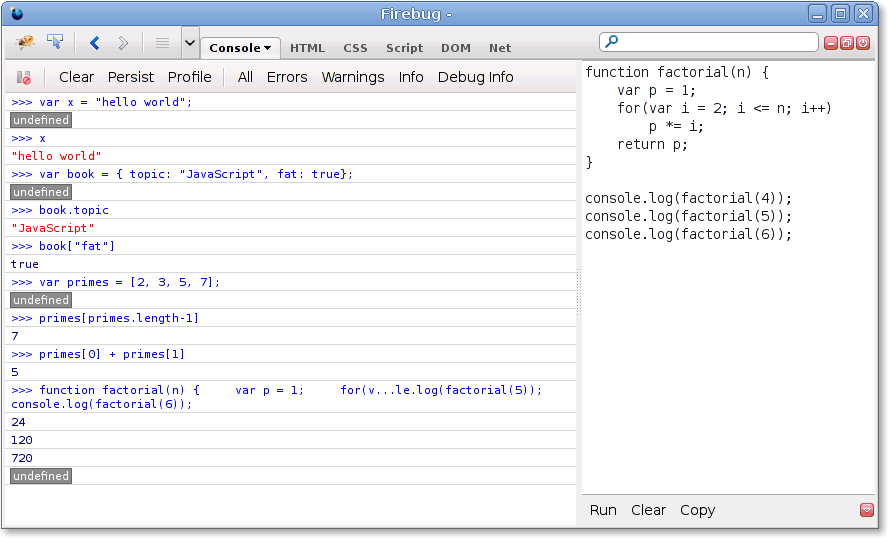JavaScript is the programming language of the Web. The overwhelming majority of modern websites use JavaScript, and all modern web browsers—on desktops, game consoles, tablets, and smart phones—include JavaScript interpreters, making JavaScript the most ubiquitous programming language in history. JavaScript is part of the triad of technologies that all Web developers must learn: HTML to specify the content of web pages, CSS to specify the presentation of web pages, and JavaScript to specify the behavior of web pages. This book will help you master the language.
If you are already familiar with other programming languages, it may help you to know that JavaScript is a high-level, dynamic, untyped interpreted programming language that is well-suited to object-oriented and functional programming styles. JavaScript derives its syntax from Java, its first-class functions from Scheme, and its prototype-based inheritance from Self. But you do not need to know any of those languages, or be familiar with those terms, to use this book and learn JavaScript.
The name “JavaScript” is actually somewhat misleading. Except for a superficial syntactic resemblance, JavaScript is completely different from the Java programming language. And JavaScript has long since outgrown its scripting-language roots to become a robust and efficient general-purpose language. The latest version of the language (see the sidebar) defines new features for serious large-scale software development.
To be useful, every language must have a platform or standard library or API of functions for performing things like basic input and output. The core JavaScript language defines a minimal API for working with text, arrays, dates, and regular expressions but does not include any input or output functionality. Input and output (as well as more sophisticated features, such as networking, storage, and graphics) are the responsibility of the “host environment” within which JavaScript is embedded. Usually that host environment is a web browser (though we’ll see two uses of JavaScript without a web browser in Chapter 12). Part I of this book covers the language itself and its minimal built-in API. Part II explains how JavaScript is used in web browsers and covers the sprawling browser-based APIs loosely known as “client-side JavaScript.”
Part III is the reference section for the core API.
You can read about the JavaScript array manipulation API by looking up
“Array” in this part of the book, for example. Part IV is
the reference section for client-side JavaScript. You might look up
“Canvas” in this part of the book to read about the graphics API defined
by the HTML5 <canvas> element, for example.
This book covers low-level fundamentals first, and then builds on those to more advanced and higher-level abstractions. The chapters are intended to be read more or less in order. But learning a new programming language is never a linear process, and describing a language is not linear either: each language feature is related to other features and this book is full of cross-references—sometimes backward and sometimes forward to material you have not yet read. This chapter makes a quick first pass through the core language and the client-side API, introducing key features that will make it easier to understand the in-depth treatment in the chapters that follow.
Get JavaScript: The Definitive Guide, 6th Edition now with the O’Reilly learning platform.
O’Reilly members experience books, live events, courses curated by job role, and more from O’Reilly and nearly 200 top publishers.


